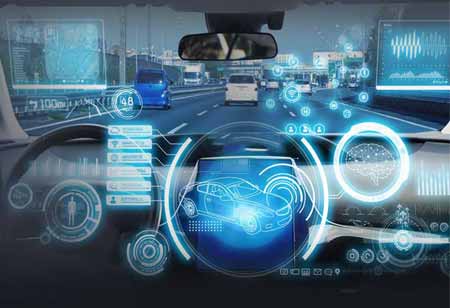The safety of the vehicle's owner is the top priority for IoT-enabled smart vehicles. Implementing Software Development Kits into hardware such as data transmitters, sensors, or vehicle control units can help to ensure safety.
Fremont, CA: The automotive industry's future is brighter now than it has embraced the Internet of Things (IoT). According to Business Insider, the impact of IoT in the automobile industry will exceed $250 billion in the next 4 to 5 years.
IoT in the automotive industry adds an advanced layer to the traditional car concept, constructing a standard structure from traditional to smart cars through the use of cutting-edge IoT technologies. The following are some of the ways that IoT is enhancing and assisting the automotive industry.
Vehicle's Owner Safety and Security Maintenance
The safety of the vehicle's owner is the top priority for IoT-enabled smart vehicles. Implementing Software Development Kits into hardware such as data transmitters, sensors, or vehicle control units can help to ensure safety.
Moving on to predictive maintenance, the user must first determine the health of his vehicle. Smart vehicles make use of data collected from vehicle sensors, real-time health monitoring, automated maintenance scheduling, anti-drowsiness solutions, seatbelt use, in-lane position control mechanisms, and so on.
Fleet and Telematics Management
Automotive IoT promotes end-to-end fleet management by leveraging in-vehicle data collection, in-cloud data management, and user analytics, among other things. Fleet Management solutions concentrate on connected sensors, location tracking and scheduling, fuel tracking, speed control, usage analytics, driver and fleet management, traffic management, and, in some cases, workload management.
Facilitating Communication between Smart Cars
Let's see what else comes your way as a result of your super experience with connected smart cars. Vehicle-to-vehicle (V2V) communication is a component of smart infrastructure technology in automobiles. All connected cars and IoT services are communicating with one another on purpose.
What is the goal of establishing V2V interaction? The first step is to avoid accidents. Vehicles communicate data about their speed, location, and route via a single network. Depending on how the system's logic is configured, the driver may receive a warning about a potential emergency situation, or the system may take pre-emptive actions such as slowing down the car to avoid a collision. For improved interactions with connected smart cars, Automotive IoT includes remote auto-companion apps, in-car infotainment apps, city navigation, location-based services, car-on-demand services, drive assist apps, usage-based insurance, remote diagnostics, as well as car security services.

 Copyright © 2025 AutoTech Outlook. All Rights Reserved | Privacy Policy | Subscribe | Sitemap | About us | Feedback Policy | Editorial Policy
Copyright © 2025 AutoTech Outlook. All Rights Reserved | Privacy Policy | Subscribe | Sitemap | About us | Feedback Policy | Editorial Policy